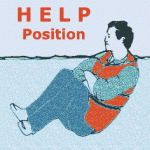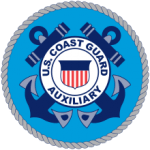To paraphrase one of my favorite New York Yankees, “half of this stuff about boating is 90 percent psychological!” Since I’m taking some license in modifying this particular Yogi-ism to suit this article, then I might as well take the liberty of interpreting it the way I want as well.
It means that most of the things we do on the water require us to exercise some degree of mental agility. We make little calculations about our speed and distance, we keep an eye out for trouble, we operate our complicated electronic devices, and we maneuver our vessels with skillful coordination. So, even though I have no idea if Yogi Berra ever set foot on a boat of any kind, I’d say he had an astute sense of what it takes to be a good boater.
I consider my job as a boating safety instructor to see that my students leave the course with a knowledge base in boating safety that will serve them well throughout their boating lives. And, of course I encourage them to pursue advanced courses that will expand their education even further. But I also instill in them that the other half of this stuff about boating involves “looking good” when they’re on the dock or on the water. And when I see one of my students on the water the next summer, I can tell if they were listening.
Now, by looking good, I don’t mean they should have their hair cut or permed before they go boating, or that they should get a good suntan and wear strands of glittery metal chains. Or that looking good means how fast they can go, or how much of a rooster tail they can throw. If that’s what looking good meant, then we already have enough people that look good on the water. My interpretation of looking good takes a lot more skill, seamanship and good sense than just hanging a gold rope around your neck and donning a pair of Gucci sunglasses.
What I tell them is that if I see them at the dock securing their vessel, I want to see their lines coiled neatly. That looks good! And by the way, it also might keep somebody from tripping on them and breaking their neck or taking an unexpected swim.
In class, I teach them to properly secure their boats to the dock. Before they come to my course, they tie their lines to the dock cleats with 27 half-hitches, which form a soccer ball sized “clump” around the cleat. That doesn’t look very good at all. After the course, when I see their boats secured to the dock with a round turn and proper cleat hitch, I see the work of a skipper that takes pride in his or her sense of seamanship. It really looks good!
I tell them that I don’t want to see them flying across the water with their fenders flapping in the breeze and banging against the sides of their boat. That doesn’t look good, and although it might not be a safety hazard, it sure isn’t seaman-like. None of my class graduates would ever think of using polypropylene line for docklines or anchor rode. They know it isn’t appropriate for that use because it doesn’t stretch much. But moreover, it looks like they never took a boating course.
Now, if you’re thinking that Commander Bob is a snob, just think about it in terms of nearly everything you do when you’re out boating. Watch others boaters. Can you guess if they have any formal boating education or seamanship training? When they come up to a pier at three-quarter throttle and slam the engine in reverse in order to enter their slip, do you think to yourself how great that looks and how skilled they must be? When you’re following another vessel and you see the captain throw a can or bottle overboard, does that bother you? Does it look good? Do you suppose he’s a boating course graduate?
Looking good means acting responsibly and showing your passengers and other boaters that you have control and know what you’re doing. It means knowing the rules and following them?and showing respect for other boaters. It’s putting PFD’s on your kids?now that really looks good!
So, look good out there. And if you still don’t know what that means, I’ll see you at the next boating course.








